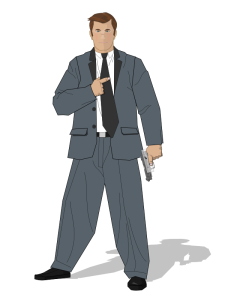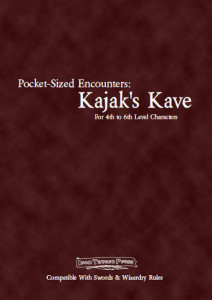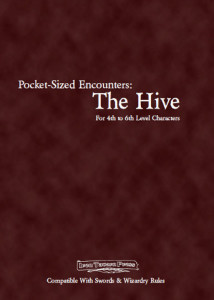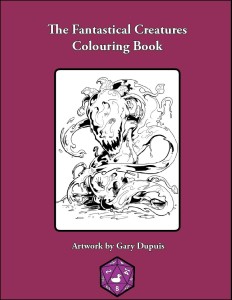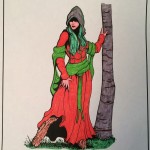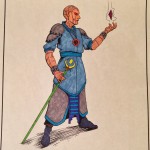
photo by Fir0002/Flagstaffotos
Naked and Dead
Back in early 2005 I got a group of people together to play some D&D. It had been awhile since I had played an RPG so I built the group from scratch. There was a guy I was good friends with locally, a guy from work, and two guys found on message boards – one from EN World and one from Wizards. This group is still intact for the most part since its formation with some member changes due to folks moving, etc.
Since I was starting the group I took on the task of DMing. It helped me set the tone for the type of game I wanted to play. Well, my turn in the DM’s chair ended right around six months ending in a TPK (well, near TPK that weirdo wizard with a rat in his pocket fled back into the labyrinth of caves while the arachnid mouther made a meal of the others.)
That probably wasn’t my most glorious moment of running games – though probably my most infamous! In retrospect throwing an arachnid mouther that had 15’ reach and 8 attacks a round against a 3rd level party likely wasn’t the wisest choice. To top it off, that was the first session for one of the players and he lost his character that very first night. (Don’t worry all you folks who are exclaiming how dare I scare someone off from gaming, he is still with the group today).
But that is not Naked and On Fire. That is Naked and Dead.
Learning About Naked and On Fire
Despite not losing anyone from the group, it was decided to not let Jeff run anymore games for awhile. So Chris (a.k.a. Crothian), guest blogger on occasion here at The Iron Tavern, stepped up to run for us. His wealth of RPG experience and memory for things of past dwarfed pretty much what the rest of us had played, run, or knew about RPGs in total.
He brought a homebrew world to the table. A homebrew world with an extensive history shaped by campaigns that had been run in it in years past. He gave us a feat every level. We were rich beyond our wildest dreams by the time we hit 2nd level (like 100,000 plus gold pieces for the party). Behind his back we talked about how this was going to be fun, but man – what a monty haul campaign. We thought we had this campaign locked up!
Then he taught us about naked and on fire. Oh – we didn’t know that is what it was initially. We were too distracted by all these feats! All this gold! Magic weapons getting crafted. Nothing could touch us. Wrong.
No amount of gold or feats could protect us from campaign world decisions by our characters setting off chains of events that shaped the entire campaign. Deals with dragons (we were always making deals with dragons) to keep from dying or to gain in power (though I am not sure it ever really worked like that). Thefts of seemingly innocent artifacts triggering entire wars that spread across the land. And trifling in the affairs of gods. No amount of gold, magic weapons, or feats could solve some of these problems. We were constantly going from one frying pan to another and occasional excursions into the fire itself.
That campaign ended in a TPK around 18th level or so as we fell to a deity, Ftaghn, in battle. Some want to blame Taegan the dwarven cleric, but we know that wasn’t the case (the group doesn’t like it when I play clerics either). The whole campaign was naked and on fire. We still talk about this campaign. We still secretly hope that Chris will show up one game night and tell us our characters that fell to Ftaghn were warped to some other dimension or disruption in time and are still alive – ready to finish what they started.
Running Naked and On Fire
Fast forward to present day and I like to think I run a naked and on fire campaign. The realization sort of hit during one of my online DCC RPG sessions when I commented the group was a bit resource starved and that those times would pass. One of the players immediately commented ‘but Jeffrey, we are *always* starving for resources!” I think that is when I realized I had hit the naked and on fire stride.
Actions in the game mean something. Their effects spread. That sword that was stolen from the crafting wizard’s shop? Yeah – that was being made for a high ranking thieves guild member. Those gems you pried from the statue? Caused the statue to animate and search out the thief – eventually leading to the gems to be returned to the statue. Dead bodies showing up on the doorstep at your favorite local hangout? That can’t be good.
The other element, at least in my game, is a bit of resource starvation. At 5th and 6th level in a DCC game and I am pretty sure my players would love to obtain a magic weapon that did exactly what they wanted. Not one that may or may not be their preferred weapon, with goals of its own.
There is also the always possible element of character death. The characters are high enough level that it takes a lot more to outright kill a character. But the road is tough for the lower level henchman. And we’ve had a wizard or halfling knocked down to 0 off a really good hit or two on just a regular enough basis that the possibility is still present.
Why Naked and On Fire
This style isn’t for everyone.
If you want to always go into a fight knowing your character you built up an intricate backstory for or have adventured with for months and months is going to come out okay on the other side, you aren’t going to like naked and on fire. If you want every problem you face to be solvable or work out your way in the end – every single time – you aren’t going to like naked and on fire. If you want to know that in the end of the campaign you are going to emerge victorious, because that’s how happy stories end, you aren’t going to like naked and on fire.
But if you are someone that ends up on the other side of a fight still alive and feel like they earned it – naked and on fire is for you. If you enjoy complex problems, possibly caused by innocent actions many sessions ago that you have to solve – naked and on fire is for you. And if you emerge victorious at the end of a long campaign and you want to feel like you earned it and it wasn’t a give – naked and on fire is for you.
Naked and on fire can be frustrating at times. But in the end, the campaigns that I have played in or run that have been of the naked and on fire vein have been the most memorable.

